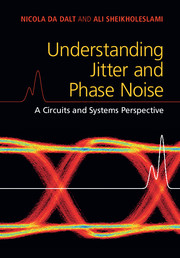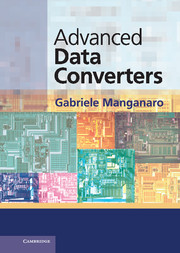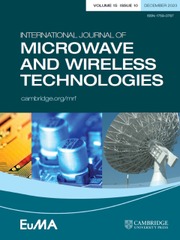Understanding Jitter and Phase Noise
Gain an intuitive understanding of jitter and phase noise with this authoritative guide. Leading researchers provide expert insights on a wide range of topics, from general theory and the effects of jitter on circuits and systems, to key statistical properties and numerical techniques. Using the tools provided in this book, you will learn how and when jitter and phase noise occur, their relationship with one another, how they can degrade circuit performance, and how to mitigate their effects - all in the context of the most recent research in the field. Examine the impact of jitter in key application areas, including digital circuits and systems, data converters, wirelines, and wireless systems, and learn how to simulate it using the accompanying Matlab code. Supported by additional examples and exercises online, this is a one-stop guide for graduate students and practicing engineers interested in improving the performance of modern electronic circuits and systems.
- The first book to focus exclusively on jitter and phase noise in electrical circuits and systems
- Brings together state-of-the-art research and expert insights on a diverse range of topics
- Supported by downloadable MATLAB® code for simulating the effects of jitter and phase noise
Reviews & endorsements
'As we continue to push operating speeds in electronic systems, timing jitter has emerged as an increasingly important showstopper across a wide range of applications. Consequently, pushing the envelope requires a thorough understanding of jitter from its mathematical description, to its manifestation in circuits and its impact on systems. This book delivers the most comprehensive treatment of this subject to date and provides valuable content to jitter-plagued engineers at all levels of experience.' Boris Murmann, Stanford University, California
'All components generate noise. They give rise to thermal and 1/f noise. All amplifiers and filters have Signal-to-Noise ratio as one of their most important specifications. In oscillators however, noise gives rise to jitter and phase noise. This is why this book is so important. It provides unique insight in the origins and the analysis of these specifications. Many applications are highlighted in the field of data converters, wireless and wireline systems, and a number of digital applications. Examples are the jitter in a CMOS inverter, in a LC oscillator, in a ring oscillator, etc. As a result this book is a necessity for all designers who have to know about noise and its performance limitations.' Willy Sansen, Katholieke Universiteit Leuven, Belgium
'Phase noise is the primary source of performance deterioration in all wireless/wireline communication systems - and yet, dedicated books have been conspicuously absent to date. We are therefore very fortunate that two real experts - Dr Da Dalt and Professor Sheikholeslami - have finally decided to fill this gap, presenting us with what will become standard reading for anyone desirous to understand the peculiar and often elusive nature of phase noise.' Pietro Andreani, Lunds Universitet, Sweden
'The rigorous mathematical description of jitter, its link to phase noise as well as its practical impact on different classes of circuits (for example digital, wireline, wireless, data converters) are all known as difficult and sometimes obscure topics even for experienced designers. This is the only book that I know which covers all of these subjects, providing at the same time both the intuitive understanding, the Matlab codes are particularly useful from this standpoint, and the appropriate mathematical rigour. The authors, that are two leading experts in the field, have also done a significant effort also in discussing the key findings available in both classical and more recent open literature, not just presenting their own work. I highly recommend this book.' Carlo Samori, Politecnico di Milano
'This excellent reference provides a wealth of material to satisfy both engineers new to clocking and seasoned veterans that are experts in jitter and phase noise. The authors address all the important aspects of these critical topics and provide great insights for readers.' Samuel M. Palermo, Texas A&M University
Product details
February 2018Hardback
9781107188570
264 pages
253 × 178 × 16 mm
0.69kg
155 b/w illus. 6 tables
Available
Table of Contents
- 1. Introduction to jitter
- 2. Basics of jitter
- 3. Jitter and phase noise
- 4. Jitter and phase noise in circuits
- 5. Effects of jitter in synchronous digital circuits
- 6. Effects of jitter on data converters
- 7. Effects of jitter in wireline applications
- 8. Phase noise in wireless applications
- 9. Advanced concepts on jitter and phase noise
- 10. Numerical methods
- Appendix A. Review of random variables and processes
- Appendix B. Matlab code for jitter generation and analysis.





